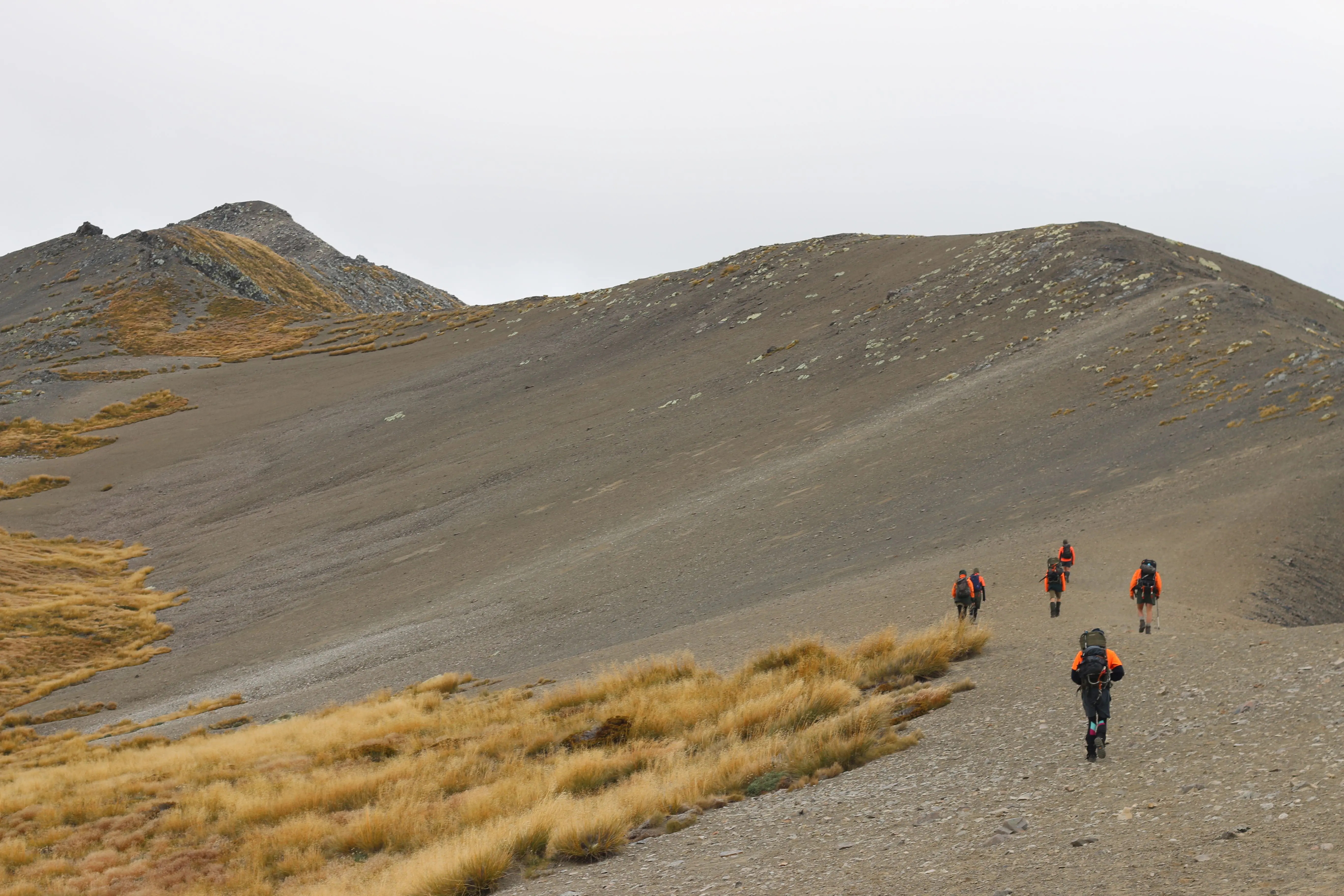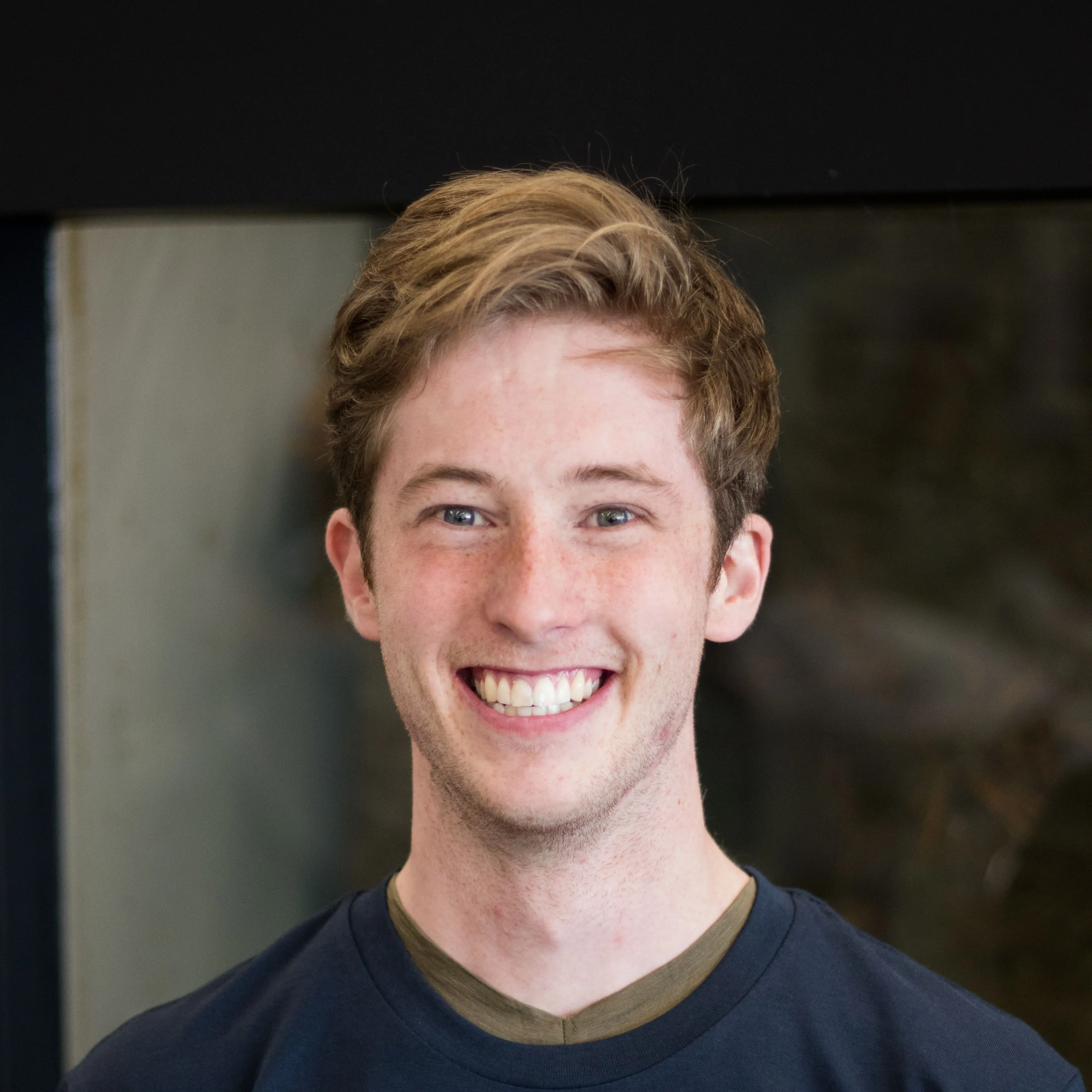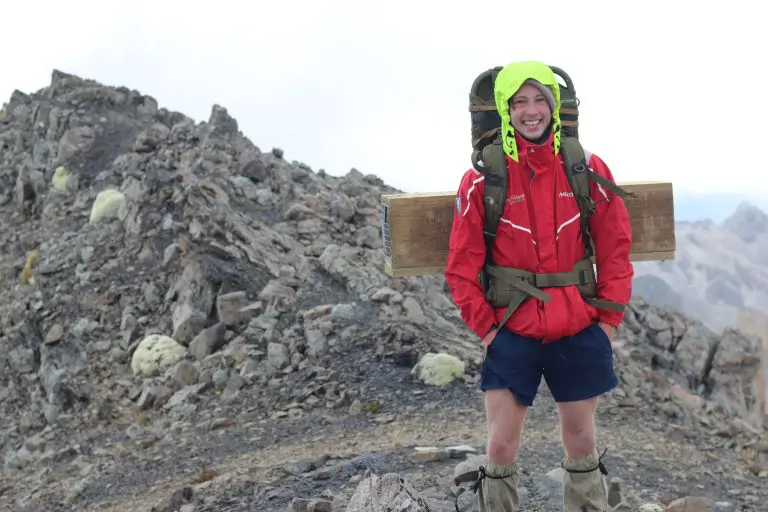When we arrived, our supplies were hauled up the hill to the hut and then Skye and I were dropped off near Sabine Hut. From here we followed the Sabine Speargrass Track up to do set up a couple of tracking tunnel lines. Almost as soon as we set foot on the beach, I could tell the forest was different. There were wasps, everywhere. Their claustrophobic hum surrounded us from every angle. We ended up avoiding being stung except for one on my neck on the way up the hill. The trick is to stop as soon as you see one flying in a straight line, because they only do it when leaving or arriving at their hive, and then give it a wide berth. Or don’t go with Laura, she always gets stung!
Back at home base, we read some of the hilarious comments in the intentions book. The hut is jointly owned by DOC and Landcare Research, which makes for interesting reading. A story of the notho-fascist (that is beech tree dominated) society of New Zealand forests, a map of all the places you won’t find any fish, and an analysis of teleporting rats that could take bait and leave no footprints. The first night, after a highly competitive game of Pictionary, I lay in bed wondering how many pests were creeping around outside in the dark and whether there would be any peanut butter bait left by tomorrow.
The next morning, I set off to check the same tracking tunnel lines that Skye and I put out the day before and replace them with new ink papers and three-day baits. The forest was ominously silent, the wasps hadn’t woken up yet and there seemed to be less birds calling from up in the trees. Even the pretty tarns that I went to check out were all dried out from the lack of rain. Everything gave me the impression of a grimmer and more desolate environment. Collecting the ink papers proved to be more difficult than I anticipated because most of them were ripped to shreds or gone, despite being nailed to a plank. Turns out possums have a go at them because they still smell like peanut butter even if the bait is gone.
I arrived back in time to hear the exclamations from Laura who had just been stung by a wasp floating in the water while she was dipping her feet in, told you she always gets stung! Emma, one of the other DOC rangers, had also been in the wars on this trip. She’d gained a place on my faceplant leader board and given herself a fat lip, all part of the job. Good luck trying to keep up with either of those two bush bashing up a mountain! That afternoon we headed back to St Arnaud and then looked at the ink papers we’d collected.
Plan A was to drive back up to Rainbow Ski Field and lay out some more traps, but we decided to pull the pin. Having a big trap strapped to your back doesn’t make navigating steep rocks very easy in blustery winds. Sailing around on the rocks got even harder when it clagged in and the temperature dropped. So, we walked back to the ski field and drove all the way back down again. Everyone warmed up with a hot drink, then we set off to cut blackberry at the Buller River bridge just out of town.
The next was day spent traipsing around in the forest with a fellow naturalist, Janet, in search of a tiny nationally endangered species: Pittosporum patulum, nicknamed pit pats. The quest to record data on these elusive plants is made more challenging since deer find them delicious, so they get hammered by their grazing. The largest one we found was little over a meter and they have a tremendous ability to camouflage themselves. Usually they sprung out at us just before we were about to stomp on them stomp on them. This would be followed by whoops of joy and an excited “I found one! That’s 3:2 to me haha!”. The jack-pot would have been to find a mature adult plant as none have been recorded in the national park before, “there must be one somewhere for there to be so many saplings!” but unfortunately, they deceived us.
A few that had been GPS located in the past had been taken out by a land slide, but I found some more to add to the list. Amusingly the percentage grazed data we collected is only used as an indicator for deer abundance! The poor plants don’t benefit at all, but thankfully they seemed to be doing okay. While we were gallivanting around in the bush, we set up a couple of kiwi automatic recording devices, ARDs. These would start recording at night and hopefully catch some roroa (great spotted kiwi) calling. I left before the ARDs were recalled and the data analysed but it was exciting to think that one might be watching me, woken from its slumber in from some crack or crevice.
On the last day working with DOC on the Rotoiti Nature Recovery Project, we headed out today to Lake Rotoroa again to recover the 3-day tracking tunnel sheets. I was teamed up with Mark, the friendly new volunteer whom I chatted the day away with.
The water on the way back across the lake was too inviting to resist stopping for a swim. Diving off Kehu into the deep blue water left me feeling inspired to dedicate more of my life to preserving and creating more havens like this. At the end of the day I said farewell to all the friends I had made in St Arnaud. Thank you to everyone for making this such an amazing experience! I will be back here again, you can count on it.


Aidan Braid
BLAKE DOC Ambassador 2018


